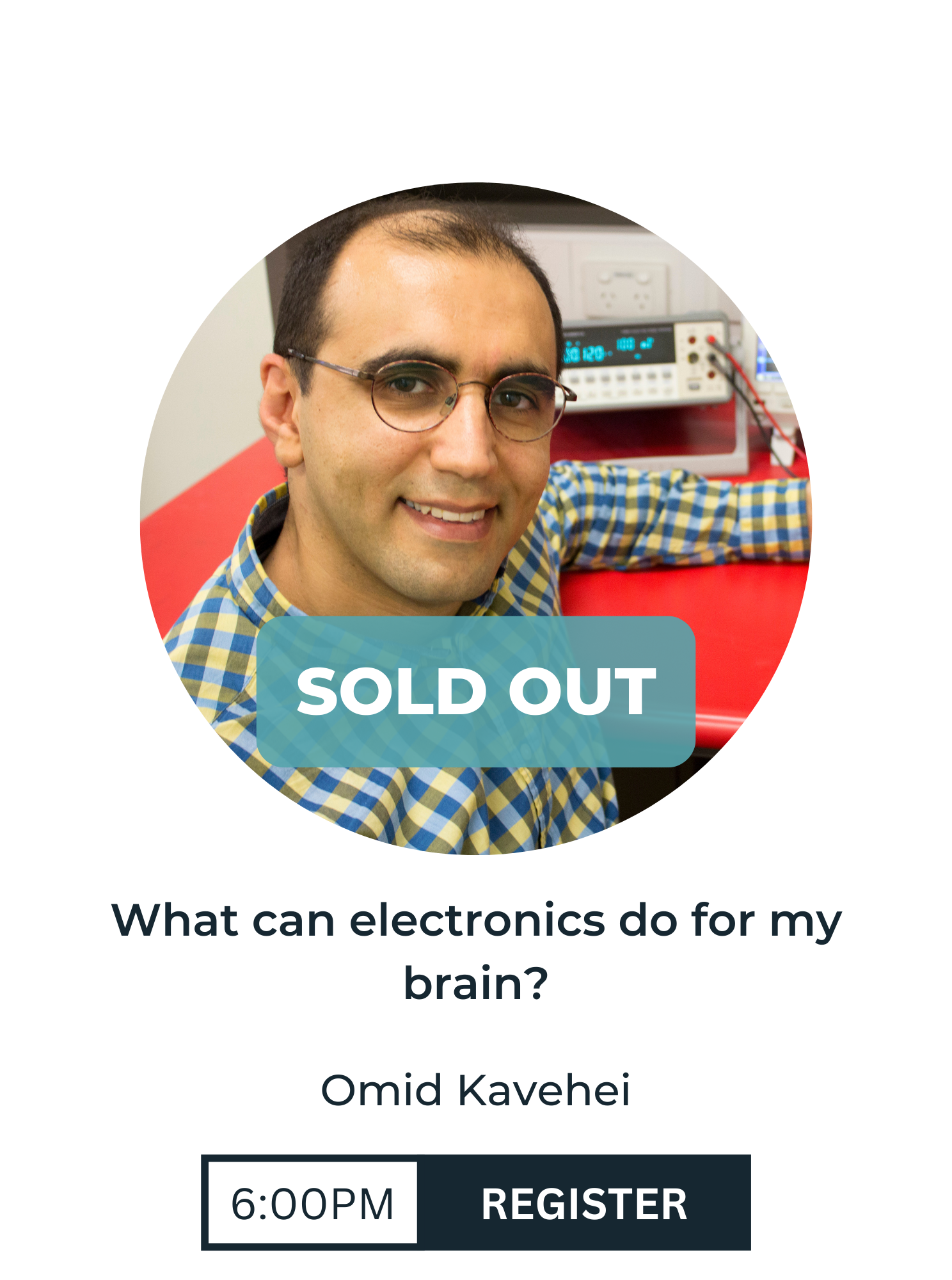What can electronics do for my brain?
When medications fail, electronic therapeutics can be an effective way to treat Parkinson’s and severe epilepsy.
However, our brain is a very well-protected organ when it comes to its chemicals and anatomy. Needless to say, the brain is also complex, really complex! It has 100 billion neurons and approximately 1,000 trillion synapses. Interacting with such a complex organ using wearables or implants is astonishingly difficult.
Join Omid to learn about brain-machine interfacing technology. Find out how electroceuticals are changing how we understand the brain, human communication and even ways to treat disease.
Bio
Omid Kavehei is an Associate Professor at the Faculty of Engineering at the University of Sydney. Prior to this role, he was with the Centre for Neural Engineering at the University of Melbourne as a Research Fellow in Microelectronics, where he worked on an Australian engineering flagship project, the Bionic Eye.
Omid’s research includes biomedical microsystems, biomedical signal processing, novel computational and security paradigms based on nanotechnology, micro-/nano-electronics and data analytics.
Event
Tuesday 4 April, 6:00 PM @SHADES, 12A Eddy Ave, Haymarket, 2000
Also speaking at this location at 8:00 PM is Arielle Gamble
SHADES is a corner bar and culture club under the tracks of Central Station in Gadigal Country.

































